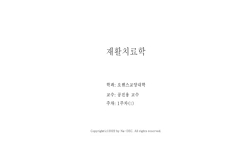본 연구는 재활치료 종사자의 심리적 소진과 이에 영향을 미치는 요인으로 개인적 변인인 자기-구획화와 환경적 변인인 지각된 사회적 지지와의 관계성을 알아보고자 하였다. 또한, 자기-구...
http://chineseinput.net/에서 pinyin(병음)방식으로 중국어를 변환할 수 있습니다.
변환된 중국어를 복사하여 사용하시면 됩니다.
- 中文 을 입력하시려면 zhongwen을 입력하시고 space를누르시면됩니다.
- 北京 을 입력하시려면 beijing을 입력하시고 space를 누르시면 됩니다.
재활치료 종사자의 자기-구획화와 지각된 사회적 지지에 따른 심리적 소진에 관한 연구 = Study on the burnout by the self-compartmentalization and perceived social support of rehabilitation therapists
한글로보기https://www.riss.kr/link?id=T11267515
- 저자
-
발행사항
부천 : 가톨릭대학교 상담심리대학원, 2008
-
학위논문사항
학위논문(석사) -- 가톨릭대학교 상담심리대학원 , 상담학과 , 2008.2
-
발행연도
2008
-
작성언어
한국어
- 주제어
-
DDC
158.7 판사항(21)
-
발행국(도시)
경기도
-
형태사항
vi, 68 p. : 삽도 ; 26 cm.
-
일반주기명
국,영문초록 포함
지도교수: 박기환
부록: 심리적 소진 설문지 외.
참고문헌(p. 51-56) 포함 - 소장기관
-
0
상세조회 -
0
다운로드
부가정보
국문 초록 (Abstract)
본 연구는 전국의 재활치료 기관에 근무하는 재활치료 종사자 146명을 대상으로 심리적 소진을 측정하기 위해 심리적 소진 척도, 자기-구획화 수준을 측정하기 위해 자기-구획화 척도, 지각된 사회적 지지를 측정하기 위해 사회적 지지 질문지를 사용하였다.
본 연구의 결과는 다음과 같다.
1. 재활치료 종사자의 일반적 배경인 성별, 연령, 직종, 학력, 결혼상태, 근무지, 근무경력, 급여수준에 따른 심리적 소진의 차이를 알아보았는데, 성별과 직종, 근무경력에 따른 심리적 소진의 차이는 없었다. 반면에 연령이 낮고, 학력 수준이 낮으며, 미혼일수록 심리적 소진을 더 많이 경험하였고, 근무지에 따라서는 중소재활병원에 근무하는 치료사가 소진을 가장 많이 경험하였다.
2. 자기-구획화와 지각된 사회적 지지, 심리적 소진과의 상관관계를 살펴본 결과 자기-구획화와 지각된 사회적 지지, 자기-구획화와 심리적 소진 사이에는 유의한 상관관계가 없었고, 지각된 사회적 지지와 심리적 소진은 유의한 부적 상관을 보였다. 지각된 사회적 지지에서 상사지지, 동료지지, 가족지지가 많을수록 심리적 소진을 덜 경험하였고, 정서적 지지, 평가적 지지, 정보적 지지를 많이 경험할수록 심리적 소진을 덜 경험하였다.
3. 자기-구획화 수준과 지각된 사회적 지지에 따른 심리적 소진의 차이를 살펴본 결과 자기-구획화 수준에 따른 심리적 소진의 유의한 차이는 보이지 않았으나, 지각된 사회적 지지에 따른 심리적 소진의 차이는 유의하게 나타났다. 자기-구획화 수준과 지각된 사회적 지지의 하위 요인들 간의 상호작용을 살펴본 결과, 자기-구획화가 낮은 집단은 사회적 지지에서 평가적 지지와 정보적 지지의 수준에 따라 심리적 소진의 차이가 있었으나, 자기-구획화 수준이 높은 집단은 지각된 사회적 지지의 수준에 따라 심리적 소진의 차이가 없었다. 그러므로 자기-구획화 수준이 낮은 집단은 심리적 소진의 개선을 위해 사회적 지지의 지각이 필요한 것으로 보인다.
마지막으로 본 연구의 의미와 제한점, 이후 연구를 위한 제언을 하였다.
본 연구는 재활치료 종사자의 심리적 소진과 이에 영향을 미치는 요인으로 개인적 변인인 자기-구획화와 환경적 변인인 지각된 사회적 지지와의 관계성을 알아보고자 하였다. 또한, 자기-구획화와 지각된 사회적 지지에 따른 심리적 소진의 차이를 알아보고 두 변인이 심리적 소진에 영향을 미침에 있어 상호 작용이 있는지를 알아보고자 하였다.
본 연구는 전국의 재활치료 기관에 근무하는 재활치료 종사자 146명을 대상으로 심리적 소진을 측정하기 위해 심리적 소진 척도, 자기-구획화 수준을 측정하기 위해 자기-구획화 척도, 지각된 사회적 지지를 측정하기 위해 사회적 지지 질문지를 사용하였다.
본 연구의 결과는 다음과 같다.
1. 재활치료 종사자의 일반적 배경인 성별, 연령, 직종, 학력, 결혼상태, 근무지, 근무경력, 급여수준에 따른 심리적 소진의 차이를 알아보았는데, 성별과 직종, 근무경력에 따른 심리적 소진의 차이는 없었다. 반면에 연령이 낮고, 학력 수준이 낮으며, 미혼일수록 심리적 소진을 더 많이 경험하였고, 근무지에 따라서는 중소재활병원에 근무하는 치료사가 소진을 가장 많이 경험하였다.
2. 자기-구획화와 지각된 사회적 지지, 심리적 소진과의 상관관계를 살펴본 결과 자기-구획화와 지각된 사회적 지지, 자기-구획화와 심리적 소진 사이에는 유의한 상관관계가 없었고, 지각된 사회적 지지와 심리적 소진은 유의한 부적 상관을 보였다. 지각된 사회적 지지에서 상사지지, 동료지지, 가족지지가 많을수록 심리적 소진을 덜 경험하였고, 정서적 지지, 평가적 지지, 정보적 지지를 많이 경험할수록 심리적 소진을 덜 경험하였다.
3. 자기-구획화 수준과 지각된 사회적 지지에 따른 심리적 소진의 차이를 살펴본 결과 자기-구획화 수준에 따른 심리적 소진의 유의한 차이는 보이지 않았으나, 지각된 사회적 지지에 따른 심리적 소진의 차이는 유의하게 나타났다. 자기-구획화 수준과 지각된 사회적 지지의 하위 요인들 간의 상호작용을 살펴본 결과, 자기-구획화가 낮은 집단은 사회적 지지에서 평가적 지지와 정보적 지지의 수준에 따라 심리적 소진의 차이가 있었으나, 자기-구획화 수준이 높은 집단은 지각된 사회적 지지의 수준에 따라 심리적 소진의 차이가 없었다. 그러므로 자기-구획화 수준이 낮은 집단은 심리적 소진의 개선을 위해 사회적 지지의 지각이 필요한 것으로 보인다.
마지막으로 본 연구의 의미와 제한점, 이후 연구를 위한 제언을 하였다.
다국어 초록 (Multilingual Abstract)
The present study subjected the 146 rehabilitation therapists who work at the rehabilitation treatment centers around the country to measure the burnout by using the translated version of Maslach Burnout Inventory (MBI) scale. For the measurement of self-compartmentalization level, self-compartmentalization scale was used, and the perceived social support was measured by using the social support questionnaire.
The results of the present study could be summarized as below.
1. The difference of burnout by the general backgrounds of rehabilitation therapists from the aspects of sex, age, occupation, academic background, marital status, workplace, work experience, and by payment level has been investigated. There was no difference of burnout by sex, occupation, and by work experience. However, the therapists in lower age, lower academic background, and unmarried therapists more frequently experienced the burnout. If differentiated by workplace, therapists who work at the mid to small rehabilitation hospitals experienced the most burnout.
2. The result of overviewing the relationship of self-compartmentalization, perceived social support and burnout revealed to show no meaningful relationship in between self-compartmentalization and perceived social support, and self-compartmentalization and burnout. However, the perceived social support and burnout presented a meaningful negative relationship. In the perceived social support, if more supports were received from seniors, co-workers and families, they were less likely to experience the burnout, and if the experiences of emotional support, appraisal support and informational supports are frequent, they were less likely experience the burnout.
3. The result of reviewing the difference of burnout by the level of self-compartmentalization and by the perceived social support, the meaningful difference of burnout by the self-compartmentalization was not observed, but the meaningful difference of burnout was observed by the perceived social support.
The result of reviewing the interaction between the variables of self-compartmentalization level and perceived social support resulted to show the difference of burnout by the levels of appraisal and informational supports in social support for the group with low self-compartmentalization, but the group with high self-compartmentalization resulted to show no difference of the burnout by the perceived level of social support. Therefore, the study revealed the possibility of improving the burnout of the group with low self- compartmentalization through the perceived social support.
Conclusively, the meanings of the present study, limitation and suggestion for following studies have been made.
The present study aimed to know the relationship between the personal variable of self-compartmentalization and the environmental variable of perceived social support in rehabilitation therapists. In addition, the difference of self-compartmentalizati...
The present study aimed to know the relationship between the personal variable of self-compartmentalization and the environmental variable of perceived social support in rehabilitation therapists. In addition, the difference of self-compartmentalization and the burnout by the perceived social support was investigated to know the interaction of the two variables on having the effect on burnout.
The present study subjected the 146 rehabilitation therapists who work at the rehabilitation treatment centers around the country to measure the burnout by using the translated version of Maslach Burnout Inventory (MBI) scale. For the measurement of self-compartmentalization level, self-compartmentalization scale was used, and the perceived social support was measured by using the social support questionnaire.
The results of the present study could be summarized as below.
1. The difference of burnout by the general backgrounds of rehabilitation therapists from the aspects of sex, age, occupation, academic background, marital status, workplace, work experience, and by payment level has been investigated. There was no difference of burnout by sex, occupation, and by work experience. However, the therapists in lower age, lower academic background, and unmarried therapists more frequently experienced the burnout. If differentiated by workplace, therapists who work at the mid to small rehabilitation hospitals experienced the most burnout.
2. The result of overviewing the relationship of self-compartmentalization, perceived social support and burnout revealed to show no meaningful relationship in between self-compartmentalization and perceived social support, and self-compartmentalization and burnout. However, the perceived social support and burnout presented a meaningful negative relationship. In the perceived social support, if more supports were received from seniors, co-workers and families, they were less likely to experience the burnout, and if the experiences of emotional support, appraisal support and informational supports are frequent, they were less likely experience the burnout.
3. The result of reviewing the difference of burnout by the level of self-compartmentalization and by the perceived social support, the meaningful difference of burnout by the self-compartmentalization was not observed, but the meaningful difference of burnout was observed by the perceived social support.
The result of reviewing the interaction between the variables of self-compartmentalization level and perceived social support resulted to show the difference of burnout by the levels of appraisal and informational supports in social support for the group with low self-compartmentalization, but the group with high self-compartmentalization resulted to show no difference of the burnout by the perceived level of social support. Therefore, the study revealed the possibility of improving the burnout of the group with low self- compartmentalization through the perceived social support.
Conclusively, the meanings of the present study, limitation and suggestion for following studies have been made.
목차 (Table of Contents)
- Ⅰ. 서론 = 1
- 1. 연구의 필요성 및 목적 = 1
- 2. 이론적 배경 = 4
- 1) 심리적 소진 = 4
- 2) 자기-구획화 = 9
- Ⅰ. 서론 = 1
- 1. 연구의 필요성 및 목적 = 1
- 2. 이론적 배경 = 4
- 1) 심리적 소진 = 4
- 2) 자기-구획화 = 9
- 3) 지각된 사회적 지지 = 13
- 3. 연구 문제 = 17
- Ⅱ. 연구 방법 = 18
- 1. 연구 대상 = 18
- 2. 연구 도구 = 20
- 1) 심리적 소진 척도 = 20
- 2) 자기-구획화 척도 = 21
- 3) 지각된 사회적 지지 척도 = 22
- 3. 연구 절차 = 24
- 1) 예비 조사 = 24
- 2) 본 조사 = 24
- 4. 자료 분석 = 24
- Ⅲ. 결과 = 26
- 1. 일반적 배경에 따른 심리적 소진의 차이 = 26
- 1) 연령에 따른 심리적 소진의 차이 = 26
- 2) 학력에 따른 심리적 소진의 차이 = 27
- 3) 결혼 상태에 따른 심리적 소진의 차이 = 27
- 4) 근무지에 따른 심리적 소진의 차이 = 27
- 5) 급여 수준에 따른 심리적 소진의 차이 = 29
- 2. 자기-구획화, 지각된 사회적 지지와 심리적 소진과의 상관관계 = 29
- 1) 자기-구획화, 지각된 사회적 지지(대상별)와 심리적 소진과의 관계 = 29
- 2) 자기-구획화, 지각된 사회적 지지(유형별)와 심리적 소진과의 관계 = 31
- 3. 자기-구획화 수준과 지각된 사회적 지지에 따른 심리적 소진의 차이 = 33
- 1) 자기-구획화 수준과 지각된 사회적 지지(대상별) 하위요인에 따른 심리적 소진 차이 = 34
- 2) 자기-구획화 수준과 지각된 사회적 지지(유형별) 하위요인에 따른 심리적 소진 차이 = 36
- Ⅳ. 논의 = 43
- 참고문헌 = 51
- 부록 = 57
- 영문인증서 = 64
- ABSTRACT = 66










